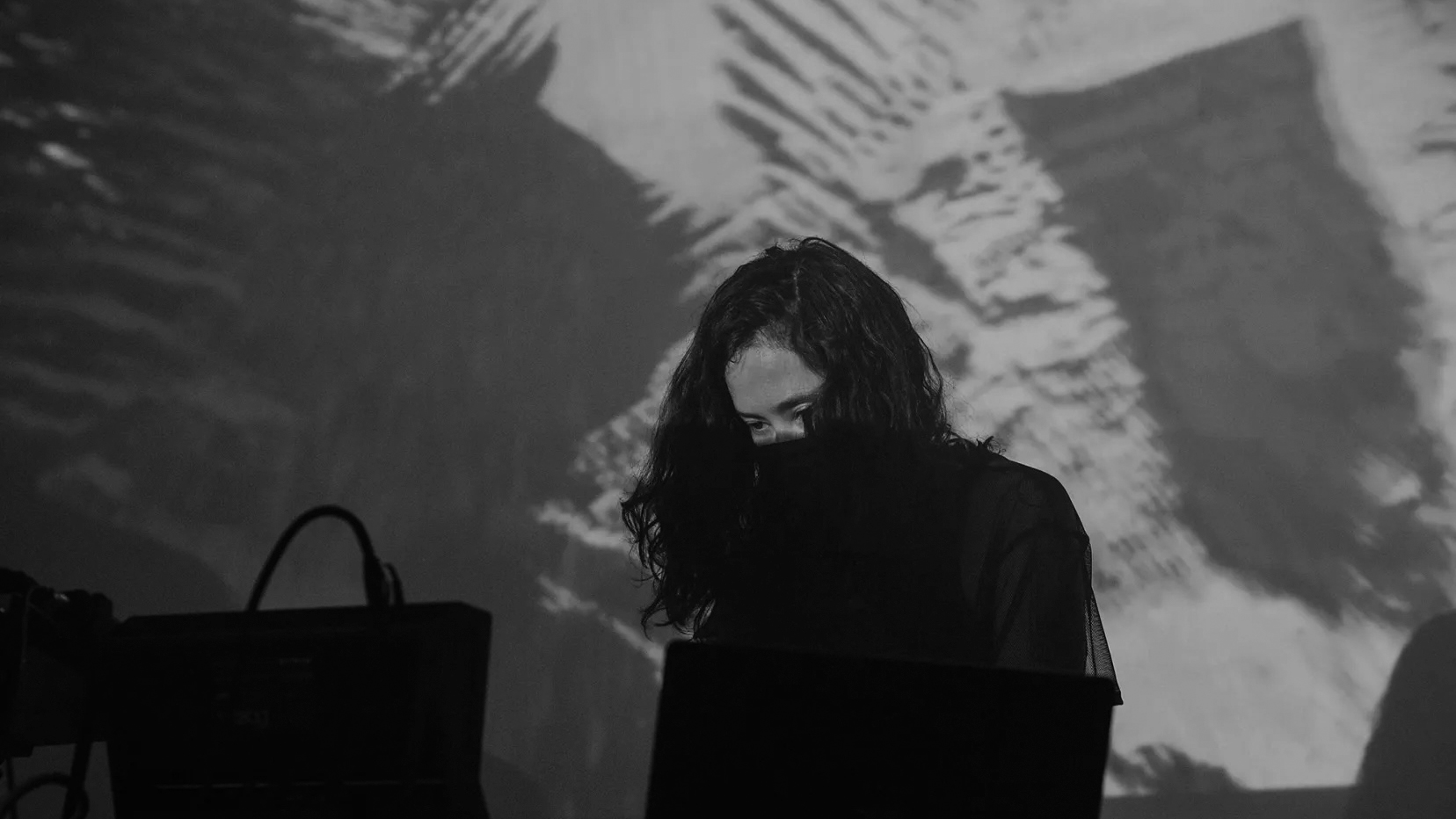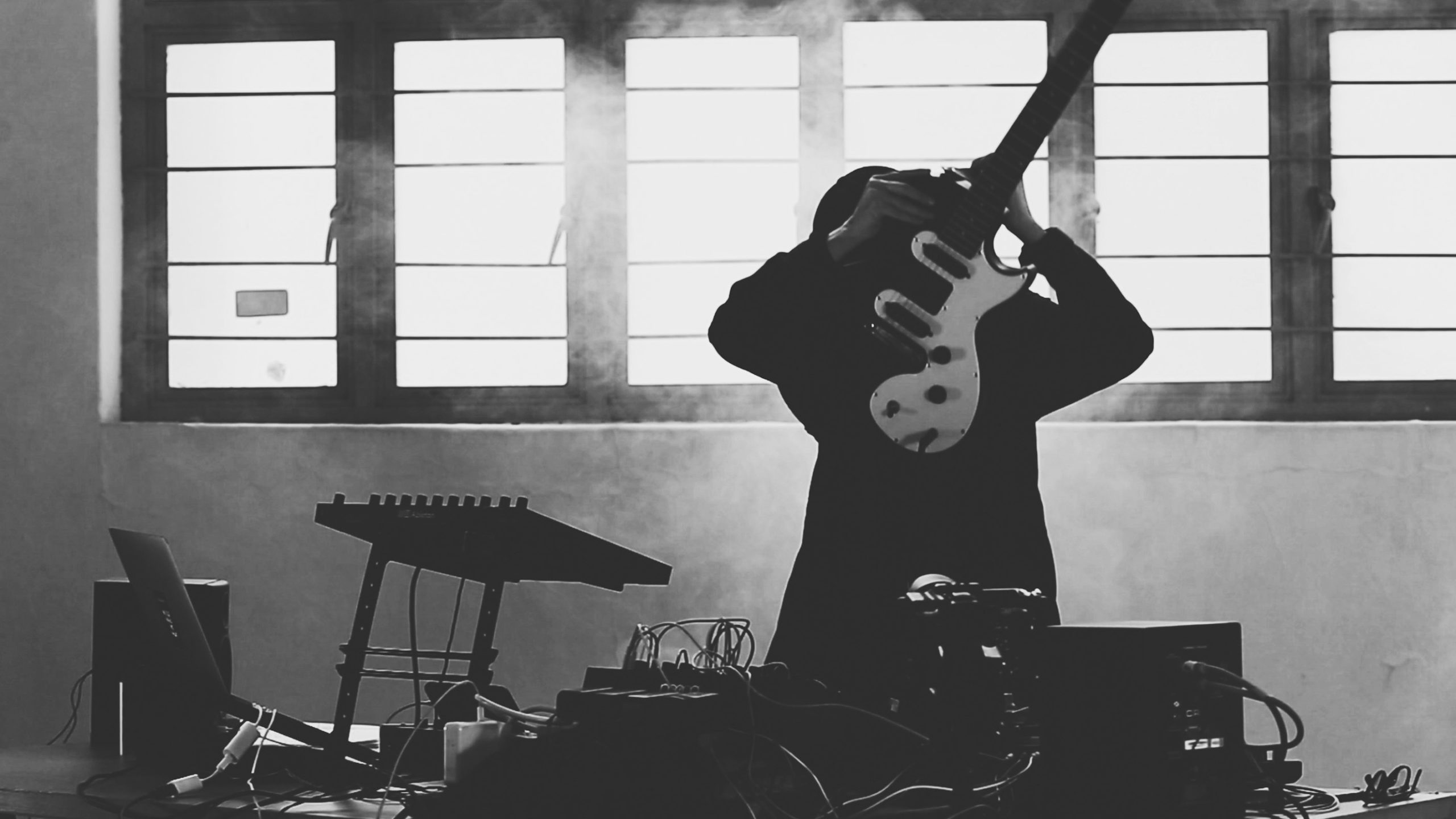Fulcrum Arts welcomes artist Leslie Garcia as a 2023 Fulcrum Incubator Artist-in-Residence.Garcia will conduct research at UC San Diego with Miller Puckette, the creator of Max and Pure Data, and at UCLA with neuroscientist Dr. Mark S. Cohen, who is an early pioneer of functional brain imaging.
Garcia’s project, Transient Hypofrontality Tools, advances a line of inquiry whereby she explores the effects and processes of brain synchronization in response to sensory stimuli. In 2022, Garcia worked with neurologists from the National Institute of Astrophysics, Optics and Electronics (INAOE) in Mexico City to collect brainwave biodata from a group of test subjects, which she applied to the development of a machine learning algorithm that allows for the detection of mood states. From this model, Garcia is designing musical instruments that will function as biofeedback systems and amplify the perception of sensory processes in a data-assisted compositional environment. During her residency, she will specifically explore the sonic aspects of this project.
Garcia is also an artist-researcher for undisciplinary tactics: Beatriz da Costa, which revisits the collaborative artistic practice of the late Beatriz da Costa (1974-2012) as an investigation into technoscientific experimentation, politics, activism, and art-making, contextualized for our contemporary moment. undisciplinary tactics will be presented by LACE as part of the 2024 Getty initiative Pacific Standard Time: Art x Science x LA.
•
Leslie García is a Mexican sound artist who develops electronic art and digital media projects that explore the fusion process between art and technology. She is a co-founder of the bioart collective Interspecifics (Mexico City, 2013-present), the electronic media collective DreamAddictive (Tijuana, 2003-2010), and Astrovandalistas (Mexico City, 2011-2017). From 2012 to 2015 she was an associate researcher at the Nucleo Laboratorial Nano of the Escola de Belas Artes – UFRJ, in Rio de Janeiro. From 2015 to 2016, she was an associate researcher in the media department of the Bauhaus University in Weimar. Additionally, she is a member of the National System of Art Creators (SNCA) in the specialty of new technologies. She produces electronic music under the aliases Microhm and LogarDecay.
Her work has been included in festivals and shows at spaces such as Medialab Prado, Museo de Arte Reina Sofia, O1SJ, Museum of Latin American Arts, Piksel Festival, Ars Electrónica, Public Art Lab in Berlin, NOMAD Center for media research, Museum of Contemporary Art in Szczecin, Museum of Latin American Art, Transitio_mx, LabSurLab2, Hip3rorganicos, Nuvem art and technology station, ISEA, Mutek_MX, Mutek Montreal, transmediale, CTM, NIME 2014 (London), Sight & Sound (Montreal), ICAD International Conference for Auditory Display (Graz), European Congress on Artificial Intelligence (York), Heroins of Sound, and others.
Miller Puckette obtained a B.S. in mathematics from MIT (1980) and Ph. D. in mathematics from Harvard (1986), winning an NSF graduate fellowship and the Putnam Prize Scholarship. He was a member of MIT’s Media Lab from its inception until 1987, and then a researcher at IRCAM (l’Institut de Recherche et de Coordination Musique/Acoustique), founded by composer and conductor Pierre Boulez. At IRCAM he wrote Max, a widely used computer music software environment, released commercially in 1990 and now available from Cycling74.com. Puckette joined the music department of the University of California, San Diego in 1994, where he is now Distinguished Professor, emeritus.
He is currently developing Pure Data (“Pd”), an open-source real-time multimedia arts programming environment. Puckette has collaborated with many artists and musicians, including Philippe Manoury (whose Sonus ex Machina cycle was the first major work to use Max), Rand Steiger, Vibeke Sorensen, Juliana Snapper, Kerry Hagan, and Irwin. Since 2004, he has performed with the Convolution Brothers. He has received honorary degrees from Université de Mons and Bath Spa University and the 2008 SEAMUS Lifetime Achievement Award.
Dr. Mark S. Cohen received his undergraduate training in both engineering at MIT and biology at Stanford. His graduate work at the Rockefeller University concerned hormonally-modulated electrical signaling. He worked in the private sector from 1985 to 1990 developing applications and technology of magnetic resonance imaging, before accepting a faculty appointment at Harvard, where he directed the high-speed MR imaging laboratory, and ultimately contributing to the development of functional MRI, performing seminal experiments in this field. Since arriving at UCLA in 1993, he has focused his work on applications and technologies of neuroimaging, and more recently, has been working toward the development of low-cost, high-performance MRI devices based on novel technologies adopted from low temperature physics.



